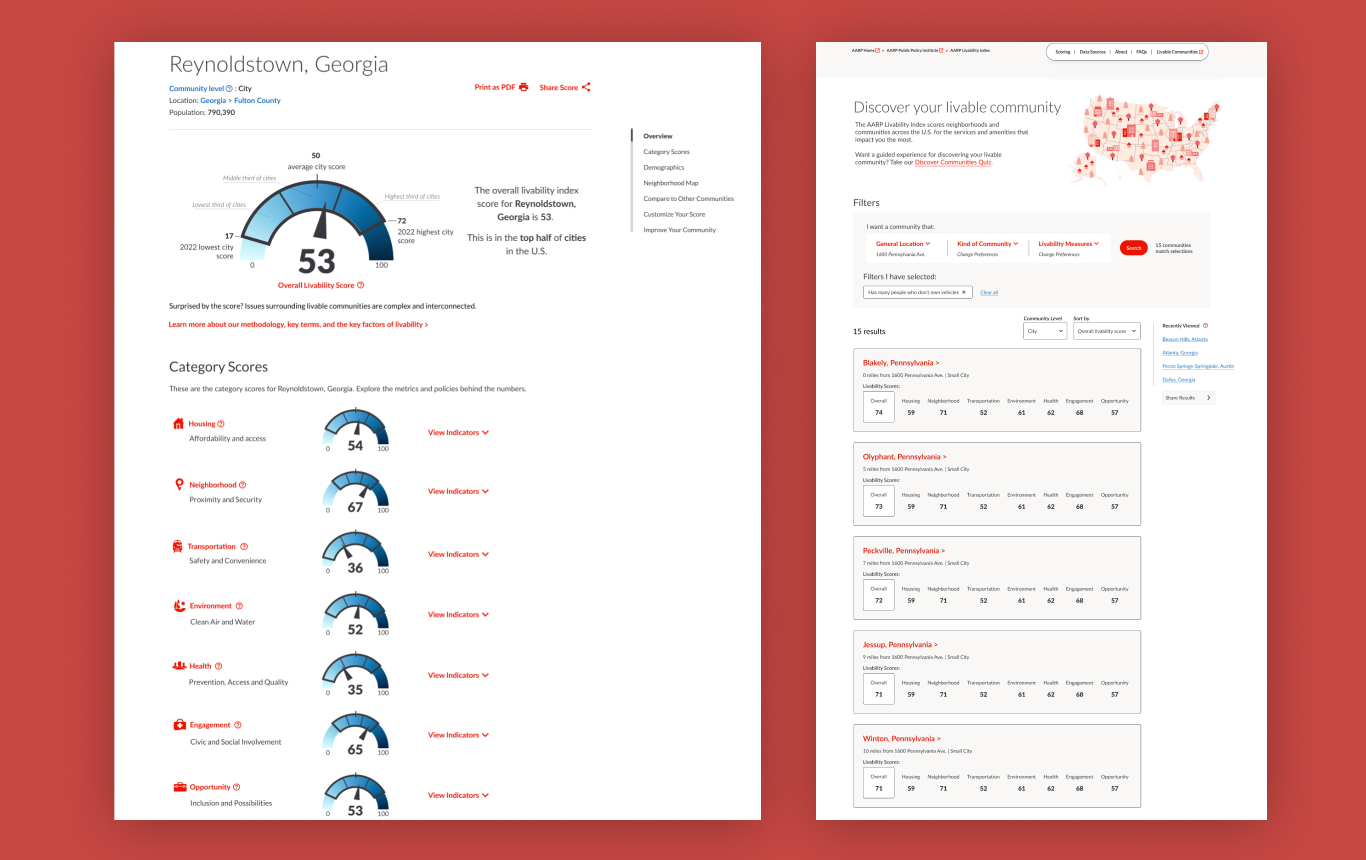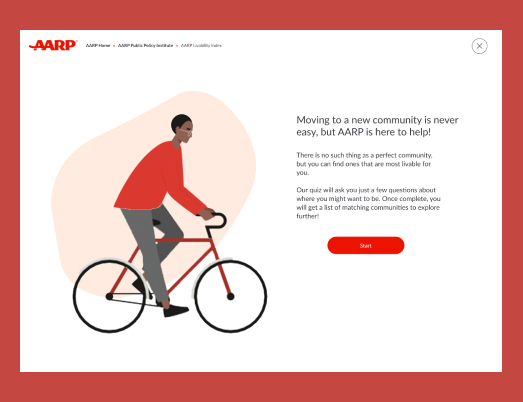AARP
Helping Seniors Access and Understand AARP’s Extensive Data


AARP is the nation’s largest nonprofit, nonpartisan organization dedicated to empowering Americans 50 and older to choose how they live as they age. Within the organization, the AARP Public Policy Institute maintains the AARP Livability Index, a key tool in their mission to promote the development of sound, creative policies to address common needs for economic security, health care, and quality of life.



The AARP Livability Index, created in 2015 and redesigned with Forum One support in 2022, is a groundbreaking, web-based tool that scores every neighborhood and community in the United States on the services and amenities that affect people’s lives. Using more than 50 national sources of data, including the U.S. Census Bureau and the Centers for Disease Control and Prevention, the Livability Index provides a clear picture of how well a community meets the current and future needs of people of all ages, regardless of income, physical ability, or ethnicity.
The AARP Livability Index measures 61 indicators spread across seven categories of livability: housing, neighborhood, transportation, environment, health, engagement, and opportunity.

AARP sought a Livability Index that was easier to use, with an upgraded and holistic user experience that made comparisons across data sets simpler and more intuitive. The underlying technology that powered their mapping platform had become antiquated and could no longer support their ambitious feature roadmap, so it was essential that the new version prioritize function, performance, and customization.



Though the Livability Index had been a successful tool since its debut in 2015, AARP needed to coalesce on a roadmap for continuous improvement and enhanced technology, with many different stakeholders and user groups involved. Forum One created an architecture and an implementation plan that help speed decision-making and consensus around the enhanced tool.


Forum One employed early testing of the existing Index which revealed pain points, particularly around the segregation of functionality and features, with different data points accessible on separate pages. Reorientation around a single search portal required a complete technical overhaul of the platform as well as internal education and acceptance of a new approach.
User testing shortly after launch revealed positive feedback for the Index’s new look and feel, as well as its unified search. Users appreciated map outlines, not previously available, showing the boundaries of the searched area. Forum One created reliable back-end measures to ensure comparable block-level data would be provided if not available for a specific unique area, reducing instances of search errors.
User feedback continues to inform Forum One and AARP’s understanding of best site functionality, and enhancements continue.
